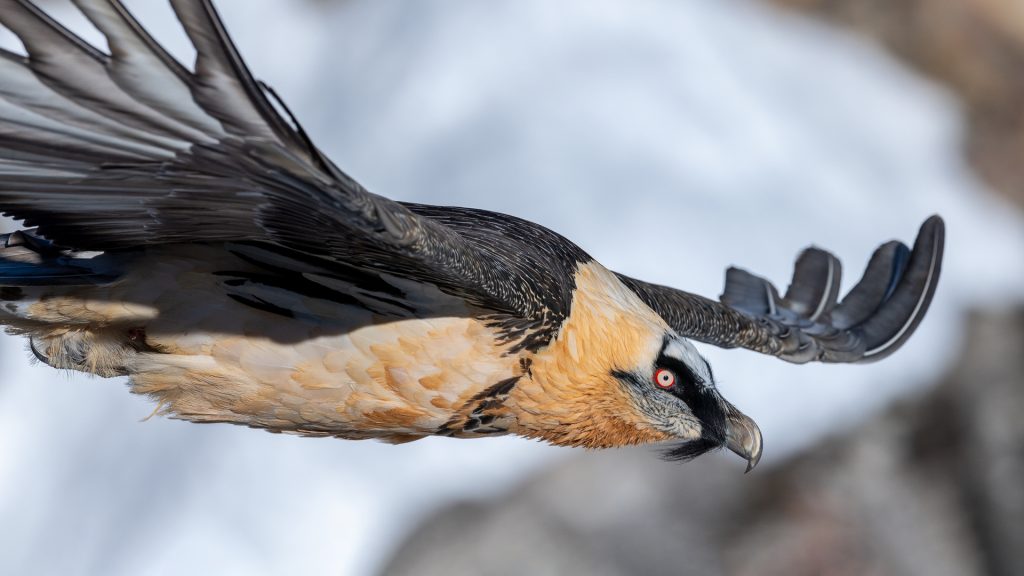A Bearded Vulture (Gypaetus barbatus) fatally collided with a helicopter in Valais, Switzerland, on 20 September, marking the first recorded incident of its kind in the country. Fortunately, the pilot escaped unharmed. This event represents a sad loss for the Alpine Bearded Vulture population.

Bearded Vulture fatally collides with a helicopter
The collision on 20 September sparked concerns in the Swiss Alps. The accident happened over the Sorniot ridge in Fully (Valais, CH). Despite the efforts of the pilot and the Bearded Vulture to avoid the collision, the worst happened, and the 3-meter wingspan bird had a tragic end.
“I did everything I could to avoid it. The bird also made evasive manoeuvres, but regrettably, we still collided.”
Luc Seymour, pilot of the aircraft, as reported by RTS
In January 2023, a map of sensitive areas across the Swiss Alps was published by the University of Bern, which pinpoints avoidable area, for the installation of wind turbines based on the presence of large birds of prey. The Sorniot Ridge, where the accident occurred, is a sensitive area on the map. This incident sparked the need to share the map information with aircraft pilots to avoid future accidents.

The Bearded Vulture’s identity remains unconfirmed, but it is believed to be “Elena”
Bearded Vulture experts in the region consider the victim might have been Elena, a female released in Alpi Marittime in 2010. Genetic analysis will be run to confirm its identity. Elena moved to Switzerland in 2019 and settled near Fully. Since then, she raised four youngsters. All Bearded Vulture losses matter, especially when it is an adult bird with successful breeding experience.
How the Alpine Bearded Vulture population is thriving
While the loss of Elena is unfortunate, the overall Bearded Vulture population trend in the Alps is positive. This has been the most successful breeding season in captivity since the programme to bring the species back to the Alps kicked off in the late 1980s. Also, for the first time this year, a chick hatched in the wild in a new territory of the Alpi Marittime, where Elena was released years ago. In total, this season, 21 Bearded Vultures were released in several European locations, of which 10 were in the Alpine range.
Two captive-bred Bearded Vultures were released in Berchtesgaden National Park, Germany, to establish a viable breeding population. In many other sites across the Alpine range, the releases have decreased over the last years as birds reach reproductive age and start breeding in the wild. Two males were released in Melchsee-Frutt, Switzerland, and six were set free in three sites across Southern France (Aveyron, Baronnies and Vercors), serving a different purpose: increasing the Alpine population’s genetic diversity. The reintroductions in France are organised within the LIFE GypAct project, which aims to bridge the Alpine and Pyrenean Bearded Vulture populations.


Bringing the Bearded Vulture back to the Alps
Across the Alpine range, Bearded Vultures became extinct at the beginning of the 20th century. Almost 70 years after its extinction, a group of experts from several countries (the founders of VCF) started a project to bring the species back to the Alps. The first Bearded Vulture release in the Alps happened in 1986 in the Hohe Tauern National Park (Austria). The first pair successfully breeding in the Alpine region was recorded in France in 1997, setting a landmark for the species’ return!



